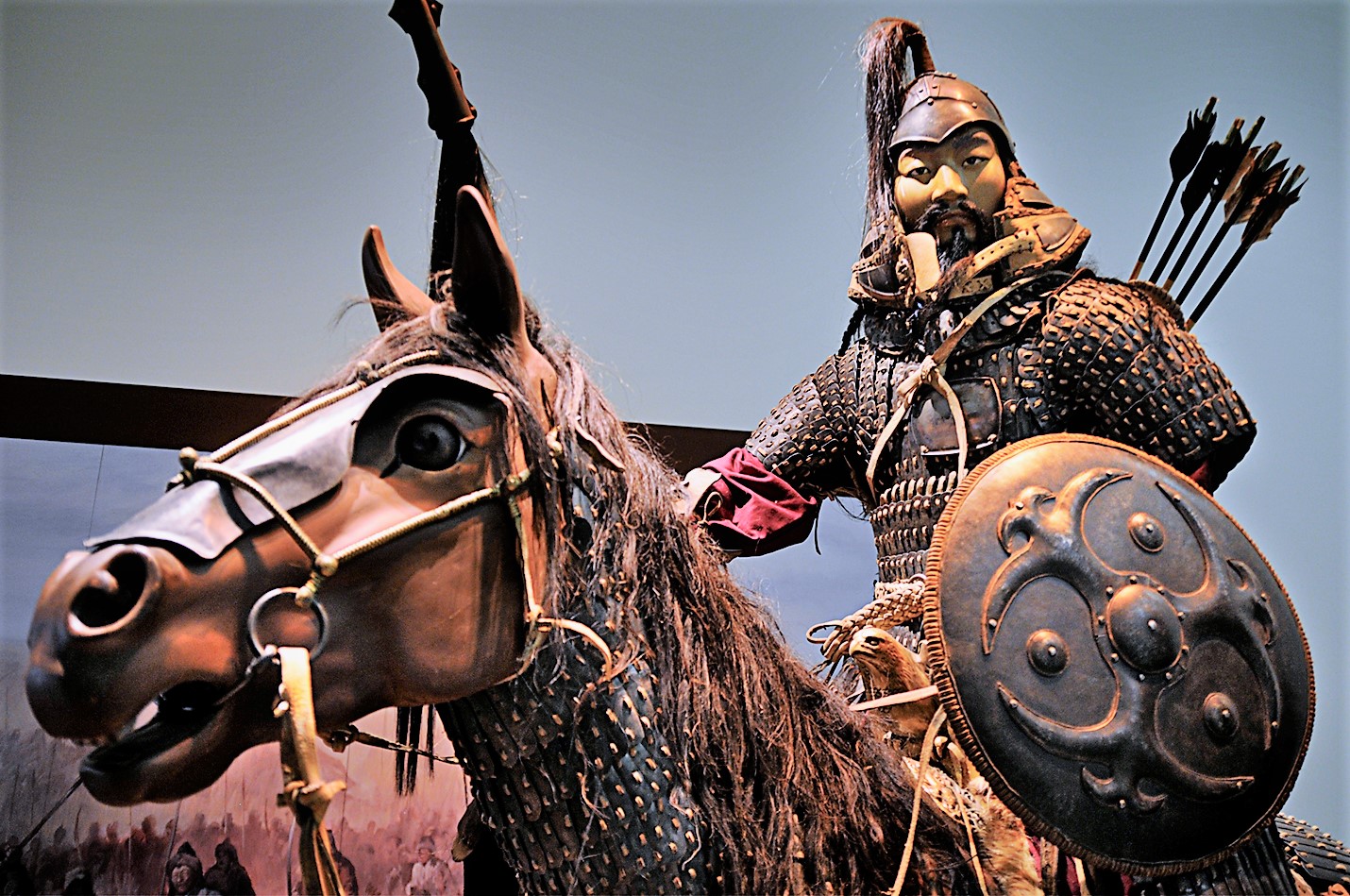Overview
Introduction to the Mongol Empire
The Mongol Empire, founded by Genghis Khan in the 13th century, was one of the largest empires in history, stretching from Asia to Europe. Known for their formidable military prowess, the Mongols employed a range of innovative tactics that allowed them to conquer and control vast territories. Meticulous strategic planning was at the core of their military operations, enabling them to outmaneuver and overwhelm their opponents. This involved scouting and intelligence gathering to assess enemy strengths and weaknesses, logistics and supply management to ensure their armies were well-equipped and provisioned, and coordination and communication to synchronize their forces. By mastering these elements, the Mongols were able to achieve remarkable military successes and establish an empire that left a lasting impact on the world.
Importance of Military Tactics
Military tactics played a crucial role in the success of the Mongol Empire. The Mongols recognized that strategic planning and battlefield tactics were essential for conquering vast territories and defeating formidable opponents. With their superior military tactics, the Mongols were able to outmaneuver and overpower their enemies, even when facing larger armies. One of the key reasons for their success was their ability to adapt and innovate their tactics according to the specific circumstances of each battle. Their scouting and intelligence gathering techniques allowed them to gain valuable information about enemy strengths and weaknesses, enabling them to plan their attacks more effectively. Additionally, the Mongols excelled in logistics and supply management, ensuring that their armies were well-provisioned and able to sustain long campaigns. They also emphasized coordination and communication, using a sophisticated system of messengers and signal fires to maintain contact and relay orders on the battlefield. By prioritizing military tactics, the Mongols established a formidable empire that left a lasting impact on the world.
Strategic Planning
Scouting and Intelligence Gathering
The success of the Mongol Empire’s military tactics can be attributed in large part to their exceptional scouting and intelligence gathering methods. Scouting played a crucial role in the Mongols’ ability to gather information about their enemies, their terrain, and their resources. They employed skilled scouts who were able to navigate through unfamiliar territories and report back valuable information to their commanders. These scouts were trained to observe and analyze the movements and strengths of enemy forces, allowing the Mongols to plan their strategies accordingly. In addition to scouting, the Mongols also utilized various intelligence gathering techniques. They employed spies and informants who would infiltrate enemy territories and gather information about their military capabilities, resources, and plans. This information was then used to gain a tactical advantage in battle. The Mongols’ emphasis on scouting and intelligence gathering gave them a comprehensive understanding of their enemies, enabling them to make well-informed decisions and adapt their tactics accordingly.
Logistics and Supply Management
Logistics and supply management played a crucial role in the success of the Mongol Empire’s military campaigns. The vastness of the empire required efficient systems to ensure the timely delivery of provisions and equipment to the troops. The Mongols established a network of supply depots and logistical centers along their conquest routes, strategically located to facilitate the resupply of armies on the move. These centers were stocked with food, weapons, armor, and other essential supplies. Additionally, the Mongols implemented innovative methods of transportation, such as the use of pack animals and cart convoys, to transport heavy equipment and supplies. This meticulous attention to logistics allowed the Mongols to maintain a highly mobile and well-provisioned army, enabling them to sustain their military campaigns over vast distances and harsh terrains. The effectiveness of their supply management systems contributed significantly to their ability to conquer and control such a vast empire.
Coordination and Communication
Effective coordination and communication were crucial elements in the military tactics of the Mongol Empire. The Mongols employed a sophisticated system of messengers and signal fires to relay orders and information across vast distances. This allowed them to maintain control over their vast empire and quickly respond to changing circumstances on the battlefield. Additionally, the Mongols utilized a hierarchical command structure, with commanders at various levels responsible for relaying orders and ensuring that they were carried out efficiently. This ensured that the Mongol forces could act in a coordinated manner, maximizing their effectiveness in battle. The use of advanced communication techniques gave the Mongols a significant advantage over their opponents, allowing them to outmaneuver and outwit their enemies. This emphasis on coordination and communication was a key factor in the success of the Mongol military.
Battlefield Tactics
Mongol Horse Archers
Mongol Horse Archers were a crucial component of the Mongol Empire’s military tactics. These highly skilled and mobile warriors played a pivotal role in the empire’s conquests. Mounted on fast and sturdy horses, they excelled in hit-and-run tactics, utilizing their exceptional archery skills to rain down a barrage of arrows on their enemies. The horse archers were trained to shoot arrows accurately while riding at high speeds, giving them a significant advantage on the battlefield. They could quickly maneuver and encircle enemy forces, causing confusion and disarray. The Mongol horse archers were also adept at using their horses as shields, providing them with protection while attacking. Their ability to strike from a distance and retreat swiftly made them a formidable force, capable of inflicting significant damage on their adversaries. The Mongol horse archers’ tactics were so effective that they became the envy of other empires, who sought to emulate their strategies. Their innovative and successful methods of warfare left a lasting legacy and influenced future empires in their military tactics and strategies.
Feigned Retreat
The tactic of feigned retreat was a key element in the Mongol Empire’s military strategy. It involved the Mongol forces appearing to retreat from the battlefield, luring their enemies into a false sense of security and encouraging them to pursue. Once the enemy was sufficiently dispersed and vulnerable, the Mongols would suddenly turn around and launch a devastating counterattack. This tactic allowed the Mongols to exploit their superior mobility and horse archery skills, as they could easily outmaneuver and inflict heavy casualties on their pursuers. It also created confusion and panic among the enemy ranks, further weakening their resolve and making them easier to defeat. The feigned retreat tactic was a testament to the Mongols’ strategic thinking and their ability to deceive and manipulate their opponents on the battlefield.
Siege Warfare
Siege warfare was a crucial aspect of the Mongol Empire’s military tactics. The Mongols were highly skilled in the art of besieging fortified cities and strongholds. They employed various innovative strategies and techniques to overcome the defenses of their enemies. One of their notable tactics was the use of siege engines, such as trebuchets and catapults, to launch projectiles and breach the walls of the enemy’s stronghold. The Mongols also utilized sapping, a method of digging tunnels underneath the walls to weaken their foundations and create openings for infiltration. Additionally, they employed psychological warfare by instilling fear in the defenders through demonstrations of their power, such as the display of severed heads or the destruction of surrounding villages. The Mongols’ expertise in siege warfare allowed them to conquer numerous fortified cities and expand their empire across vast territories. Their success in this aspect of military tactics greatly contributed to their overall dominance and the establishment of one of the largest empires in history.
Conclusion

Legacy of Mongol Military Tactics
The military tactics employed by the Mongol Empire left a lasting legacy that continues to be studied and admired to this day. One of the key aspects of their tactics was their exceptional horsemanship and archery skills. Mongol horse archers were renowned for their ability to shoot arrows accurately while riding at high speeds, giving them a significant advantage in battle. Another important tactic used by the Mongols was the feigned retreat, where they would lure their enemies into a false sense of security before launching a devastating counterattack. This strategy allowed the Mongols to defeat much larger armies and conquer vast territories. Additionally, the Mongols were skilled in siege warfare, using innovative techniques such as building movable towers and using siege engines to breach fortified walls. This expertise in siege warfare enabled them to capture and control numerous cities and fortresses. The influence of Mongol military tactics can be seen in the strategies employed by future empires, such as the Ottoman Empire and the Mughal Empire, who adopted similar cavalry-based tactics. The Mongols’ success on the battlefield also taught valuable lessons about the importance of adaptability, coordination, and intelligence gathering in warfare. Overall, the military tactics of the Mongol Empire left an indelible mark on history and continue to be studied and emulated by military strategists and historians alike.
Influence on Future Empires
The military tactics employed by the Mongol Empire had a profound influence on future empires and warfare strategies. One key aspect of their tactics was the effective use of scouting and intelligence gathering. The Mongols were skilled in gathering information about their enemies, their strengths, weaknesses, and the terrain they would be fighting on. This allowed them to plan their strategies and make informed decisions on the battlefield. Another significant contribution of the Mongols was their expertise in logistics and supply management. They developed efficient systems to ensure a steady supply of provisions and equipment for their armies, allowing them to sustain long campaigns and conquer vast territories. Additionally, the Mongols excelled in coordination and communication. They employed a sophisticated network of messengers and signal systems to maintain constant communication between their units, enabling swift coordination and effective execution of battle plans. These military innovations of the Mongols had a lasting impact on future empires, shaping the way wars were fought and strategies were devised.
Lessons Learned from the Mongol Empire
The military tactics employed by the Mongol Empire continue to captivate historians and military strategists alike. The Mongols’ ability to adapt their strategies to different terrains and situations allowed them to conquer vast territories and establish one of the largest empires in history. Scouting and intelligence gathering played a crucial role in their success, enabling them to gather information about enemy forces and plan their attacks accordingly. Additionally, the Mongols’ emphasis on logistics and supply management ensured that their armies were well-provisioned and able to sustain long campaigns. Coordination and communication were also key factors in their military victories, as the Mongols developed a sophisticated system of relays and messengers to relay orders and information across vast distances. These lessons from the Mongol Empire continue to inspire and inform military strategies to this day, highlighting the importance of adaptability, intelligence, logistics, and communication in achieving success on the battlefield.
Avid Writer with invaluable knowledge of Humanity!
Upcoming historian with over 30 million views online.
“You make your own life.”





